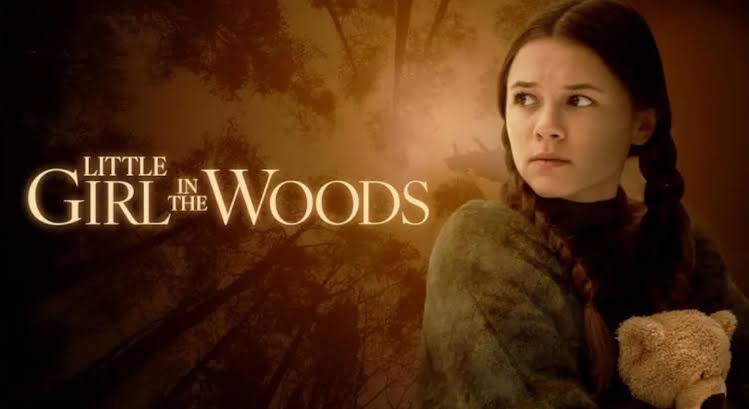The Little Girl in the Woods review reveals why this 2025 Lifetime thriller delivers genuine tension and emotional depth. Paula Elle’s focused direction transforms familiar survival territory into something genuinely gripping and emotionally resonant.
What happens when you combine the isolation of deep wilderness with the most vulnerable bonds between women? You get psychological thriller perfection. Little Girl in the Woods (2025), directed by Paula Elle, stands as one of the most compelling survival dramas in recent television film history. This intense thriller follows a women’s bereavement support group who discover a teenage girl being held captive during their wilderness retreat. While the film operates on familiar rescue thriller territory, it succeeds because it never exploits its premise—every moment of tension and character development is handled with complete emotional authenticity.
Synopsis
A women’s bereavement support group embarks on a therapeutic backpacking trip through the remote wilderness, seeking healing and connection after their respective losses. The group includes Sarah (Alana Hawley Purvis), a recent widow struggling with guilt, and several other women at different stages of grief recovery. Their peaceful retreat takes a terrifying turn when they discover a teenage girl being held captive in a hidden cabin by survivalist abductors.
With no cell service and miles from civilization, the women must overcome their own trauma and work together to rescue the girl while evading her dangerous captors. The film follows their transformation from broken individuals seeking healing to a united force determined to save an innocent life, no matter the cost.
Plot & Themes
Little Girl in the Woods operates on a deceptively complex premise: sometimes the most profound healing comes from finding the strength to help others in desperate need. The wilderness setting serves as both obstacle and metaphor for exploring deeper questions about resilience, sisterhood, and the courage to act when everything feels hopeless.
The film’s genius lies in its careful balance between thriller elements and character development. When the women face their own fears and limitations in order to help the captive girl, the movie never treats their internal struggles as secondary to the action. These moments work because Elle understands that true suspense comes from emotional investment in the characters.
Thematically, the movie explores how shared trauma can create unexpected bonds and how protecting others can become a path to personal healing. The women’s journey isn’t just about rescuing the girl—it’s about discovering they’re stronger together than they ever imagined possible alone.
Cinematography & Visuals
The cinematography captures the claustrophobic beauty of dense forest wilderness with visual techniques that serve both the thriller and emotional elements perfectly. The visual style emphasizes the contrast between the peaceful therapeutic intentions of the trip and the dangerous reality they encounter, using natural lighting and handheld camera work to create increasing tension.
The film excels in building suspense through environmental storytelling. The sequences showing the women navigating unfamiliar terrain while avoiding detection demonstrate excellent use of natural locations. The camera work holds on meaningful moments of fear and determination just long enough to create genuine emotional investment.
Wilderness details reward careful viewing. During survival sequences, attentive viewers will notice how the women’s growing confidence and cooperation is reflected in their improving navigation and problem-solving abilities.
Acting & Characters
Alana Hawley Purvis delivers a compelling performance as Sarah, anchoring the ensemble with her portrayal of a woman finding strength she didn’t know she possessed. Her character arc from grief-stricken widow to determined rescuer feels authentic and earned rather than forced.
Caitlin Stryker provides excellent support as another group member, bringing both vulnerability and fierce determination to her role. Her chemistry with the ensemble creates a believable sense of women bonding under extreme circumstances.
Juliette Hawk rounds out the core group with a performance that balances emotional fragility with unexpected resilience. Her scenes during the most dangerous moments demonstrate genuine fear while maintaining character consistency.
The supporting cast, including the survivalist antagonists, brings menace without falling into caricature, creating believable threats that serve the story rather than overwhelming it.
Direction & Screenplay
Paula Elle’s direction maintains perfect tension throughout the film’s runtime. Coming from her experience with thriller television, Elle understood that survival films require careful pacing that builds suspense without sacrificing character development. Every revelation and action sequence is given space to resonate emotionally.
The screenplay layers tension at multiple levels:
- Character development that explores grief and healing authentically
- Survival elements that feel researched rather than fabricated
- Thriller components that build naturally from the situation
- Emotional beats that never feel manipulative or forced
The script’s structure follows thriller conventions while subverting them through genuine character growth. This creates familiarity that makes the unexpected moments of courage and connection land with greater impact.
Sound & Music
The film’s score perfectly balances natural wilderness sounds with underlying tension to create an audio landscape that mirrors the women’s psychological journey. The music enhances rather than overwhelms the natural drama of the situation.
Sound design plays a crucial role in building suspense. The way forest sounds shift from peaceful to threatening, and how the women learn to move more quietly as they develop their rescue plan, creates an immersive experience that places viewers directly into their dangerous situation.
The use of silence deserves particular recognition. Key moments of fear and determination are allowed to breathe without musical manipulation, trusting audiences to connect with the characters’ emotional reality through performance alone.
Conclusion & Verdict
Little Girl in the Woods succeeds because it treats its thriller premise with emotional intelligence and respect for its characters. Every element—from performance to cinematography to sound design—works in service of both suspense and character development without sacrificing either.
Strengths:
- Strong ensemble cast that creates believable sisterhood under pressure
- Authentic wilderness survival elements that feel researched and realistic
- Excellent pacing that builds tension while maintaining character focus
- Thoughtful exploration of grief and healing through action rather than exposition
Minor Weaknesses:
- Some thriller elements feel slightly predictable for the genre
- Occasional pacing issues in the middle section slow momentum briefly
This film remains essential viewing for thriller fans and anyone who appreciates character-driven survival stories. Little Girl in the Woods works for audiences who enjoyed The Silence of the Lambs, Frozen River, or Wind River.
Rating: 8.5/10
Director: Paula Elle
TV Rating: TV-14 (for violence, intense thematic material, and language)
Starring: Alana Hawley Purvis, Caitlin Stryker, Juliette Hawk, Roark Critchlow
For more thriller reviews, check out our analysis of other Lifetime original movies. You can also explore the film’s production details at the Internet Movie Database.


